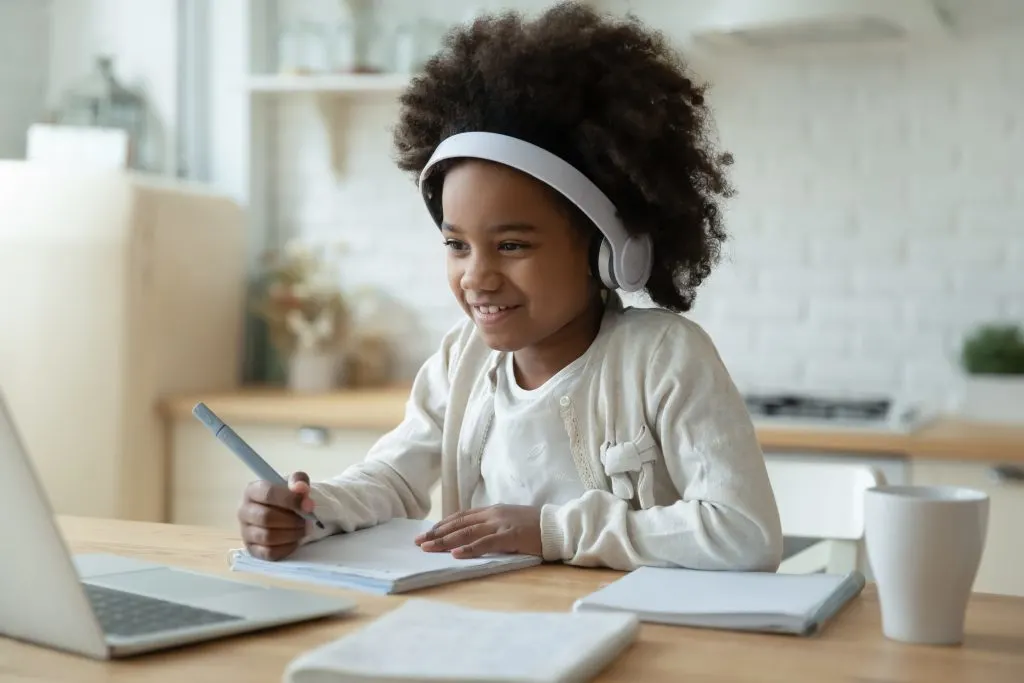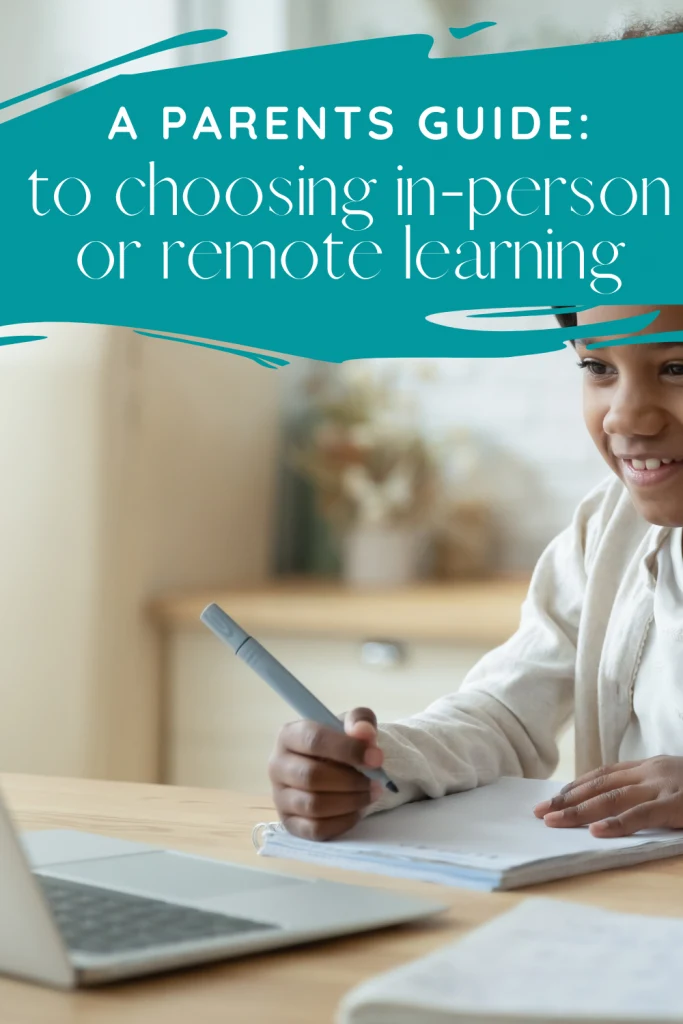If you aren’t sure about which learning option to choose for your child for the 2020/2021 school year this in-class learning versus online/remote learning: a parents guide will offer some things to consider when making the choice that is best for your family.
Under current circumstances, many parents across the nation are tasked with deciding between in-class learning versus online/remote learning for their child. This can be a large decision, especially if it will be a switch in what the child has been doing academically.
There is quite a bit you need to know, so in this guide of in-class learning versus online/remote learning, we will weigh the pros and cons of both options so you can decide what is the best option for your child’s academic success.
Your child’s schooling options will likely change from state to state and even from district to district. To make the best choice for your family, read your school’s policy and don’t be afraid to ask questions.

Parent Presence
With in-class learning, the parent is not required to be at the school during the course of the day. With remote learning, certain circumstances may require a parent to be present at home with their child.
If your child is too young to be left at home by themselves, then a parent or caretaker needs to be with them. Additionally, some forms of remote learning still require students to attend classes at specific times and turn in assignments before certain dates.
If your children are not yet responsible enough to attend online classes and complete assignments, they will need a parent or guardian to keep them on track and check in as needed.
Additionally, younger kids won’t be able to talk with their teachers as easily, so a parent may need to step in to help academically. Middle school and high school children should be able to work fairly independently after they get the hang of the online school.
Socialization
Obviously, in-class learning means kids will be able to socialize with other kids. They will also be able to see their friends, which can be very important for their academic career. Distance learning doesn’t as easily allow kids to socialize with one another.
If your kids are too young to talk to their friends online or on a phone, then removing them from their social environment can be negative if they do not understand why.
Teacher Interaction
As mentioned before, students will have a harder time interacting with their teachers on a regular basis. Additionally, if they do not attend live class sessions online, it will be even more difficult to learn unless your school’s online option offers recordings.
This isn’t a problem for some kids, usually teenagers as they can email and talk to their friends to figure out what they need to do.
With younger kids, however, it can be much more stressful and you as a parent may need to contribute much more to your child’s education than you would if they were in an in-person environment.
Food
Learning at home means eating at home, so you as a parent will need to provide breakfast and lunch for your child. If your child already ate breakfast and home and packed a lunch this isn’t a problem.
However, if your child mainly ate at school this can be difficult for parents both in terms of figuring out lunches and the finances to buy them.
If you will be working from home as well, you’ll need to play quick and easy lunches. Don’t be afraid to get the children involved because they can learn to meal prep and help prepare lunches.
Time and Organization
Distance learning means that your children may need to attend online class sessions. However, even with those sessions your children will have much more time in the day.
Your child will no longer need to commute back and forth to school, and there will be no time wasted as your child can get right to work on their assignments and attend classes as needed. This can be incredibly convenient, especially for older kids as this gives them much more freedom for their schedule.
For younger kids this extra time they have can be hard for you as a parent to fill, but it might be easier for you to adjust your schedule to your child’s education if they are at home.
Health and Safety
The health and safety of your child comes first. Parents of children with health risks need to ensure that their child will be safe in a public setting before sending them to school.
Additionally, the health and wellbeing of your child may depend on where you live, as certain areas are more impacted by current events than others are.
Schools across the country are implementing systems to keep children safe this fall, but it may not be enough for your child. Consider contacting the school or going online and researching what they are doing for this upcoming semester.
It can be a tough decision for parents to decide between in-person or distance learning for their child. Both have their own pros and cons, but it essentially boils down to the health and responsibility of your child.
Every family and every child is different, and we need to ensure that we are giving them the best education that we can possibly offer.
If you did choose to do online/remote learning check out this COVID-19 daily schedule for kids with free printable.

